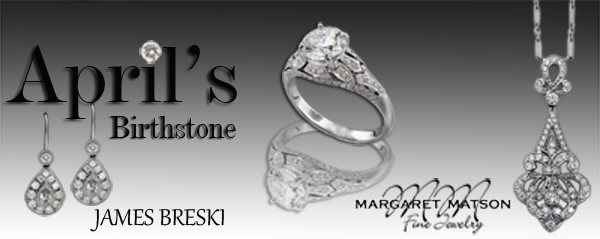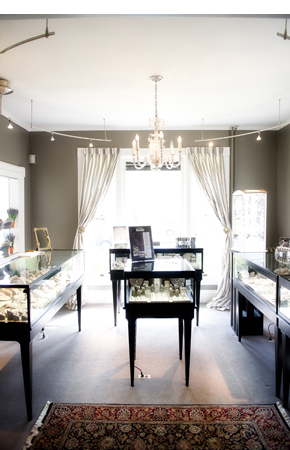 By all accounts, the world first fell in love with diamonds that hailed from India. Gathered there from the country’s rivers and streams, some historians estimate that the Indian diamond trade dates from the fourth century BC. Diamonds traveled the trade routes to Western Europe and by the 15th century became the crowning gems of European royalty. We measure a stone’s value today using a system created by the Gemological Institute of America (GIA). The 4Cs are considered the global language of diamond quality: – Color: diamonds are categorized on an alphabetic scale from D (near colorless) to Z (yellow); – Cut: which involves proportions, symmetry and polish to measure how a diamond’s facets interact with light; – Clarity: assigns a grade to each gemstone based on the number, size, relief and position of inclusions and blemishes within the stone; and – Carat weight: measures the mass of a diamond. For further information on the valuing of diamonds, read more here. The diamond is the only gem made of a single element. Typically composed of 99.5 percent carbon, diamonds also contain trace elements that can influence the color or crystal shape of the stone. Formed under high temperature and pressure conditions that exist about 100 miles beneath the earth’s surface, diamonds are the hardest material on earth. Yet while they are 58 times harder than anything else in nature, jewelers set the sparklers in some of the most delicate settings ever created. So treat your rings, earrings, pendants and bracelets with care! While diamonds make great “everyday” jewelry, it is wise to spare them the trip to the pool (chemicals), the spring cleaning routine (more chemicals and lots of bangs and bumps) and the workout at the gym (a rough ride around tough machinery). Yoga class might be fine. A dinner out is lovely. Even a spring time drive in a convertible is OK, but leave them at home for that horseback ride or gardening. Did you know? There is a diamond star some 50 million light-years from Earth in the Centaurus constellation. Once as bright as our own sun, what remains is the compressed heart of the star, a lump of crystallized carbon that is 4,000 km across. This diamond star weighs in at 10 billion-trillion-trillion carats, eclipsing the largest diamond on Earth – the 546-carat Golden Jubilee that was cut from a stone mined in South Africa. Scientists named the star “Lucy” after the Beatles’ hit song, “Lucy in the Sky with Diamonds.”
By all accounts, the world first fell in love with diamonds that hailed from India. Gathered there from the country’s rivers and streams, some historians estimate that the Indian diamond trade dates from the fourth century BC. Diamonds traveled the trade routes to Western Europe and by the 15th century became the crowning gems of European royalty. We measure a stone’s value today using a system created by the Gemological Institute of America (GIA). The 4Cs are considered the global language of diamond quality: – Color: diamonds are categorized on an alphabetic scale from D (near colorless) to Z (yellow); – Cut: which involves proportions, symmetry and polish to measure how a diamond’s facets interact with light; – Clarity: assigns a grade to each gemstone based on the number, size, relief and position of inclusions and blemishes within the stone; and – Carat weight: measures the mass of a diamond. For further information on the valuing of diamonds, read more here. The diamond is the only gem made of a single element. Typically composed of 99.5 percent carbon, diamonds also contain trace elements that can influence the color or crystal shape of the stone. Formed under high temperature and pressure conditions that exist about 100 miles beneath the earth’s surface, diamonds are the hardest material on earth. Yet while they are 58 times harder than anything else in nature, jewelers set the sparklers in some of the most delicate settings ever created. So treat your rings, earrings, pendants and bracelets with care! While diamonds make great “everyday” jewelry, it is wise to spare them the trip to the pool (chemicals), the spring cleaning routine (more chemicals and lots of bangs and bumps) and the workout at the gym (a rough ride around tough machinery). Yoga class might be fine. A dinner out is lovely. Even a spring time drive in a convertible is OK, but leave them at home for that horseback ride or gardening. Did you know? There is a diamond star some 50 million light-years from Earth in the Centaurus constellation. Once as bright as our own sun, what remains is the compressed heart of the star, a lump of crystallized carbon that is 4,000 km across. This diamond star weighs in at 10 billion-trillion-trillion carats, eclipsing the largest diamond on Earth – the 546-carat Golden Jubilee that was cut from a stone mined in South Africa. Scientists named the star “Lucy” after the Beatles’ hit song, “Lucy in the Sky with Diamonds.”
April Birthstone: DIAMONDS!
Leave a Reply Click here to cancel reply.
You must be logged in to post a comment.

Hours of Operation:
Tuesday – Saturday: 10:00 AM – 5:00 PM
(630) 232-4500
Email: Matson@matsonjewelry.com






No comments yet.